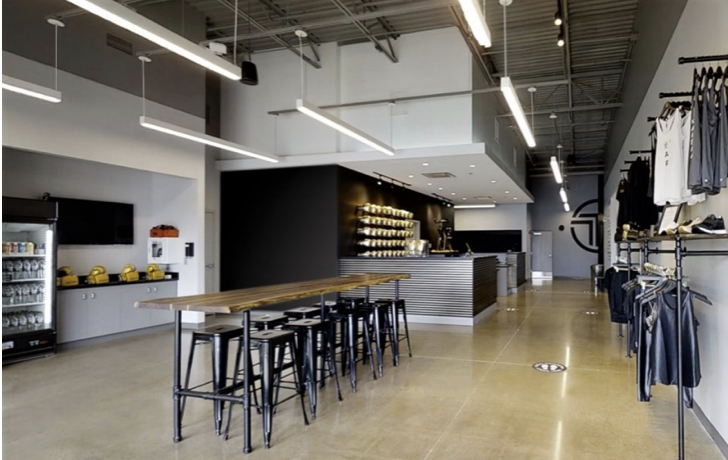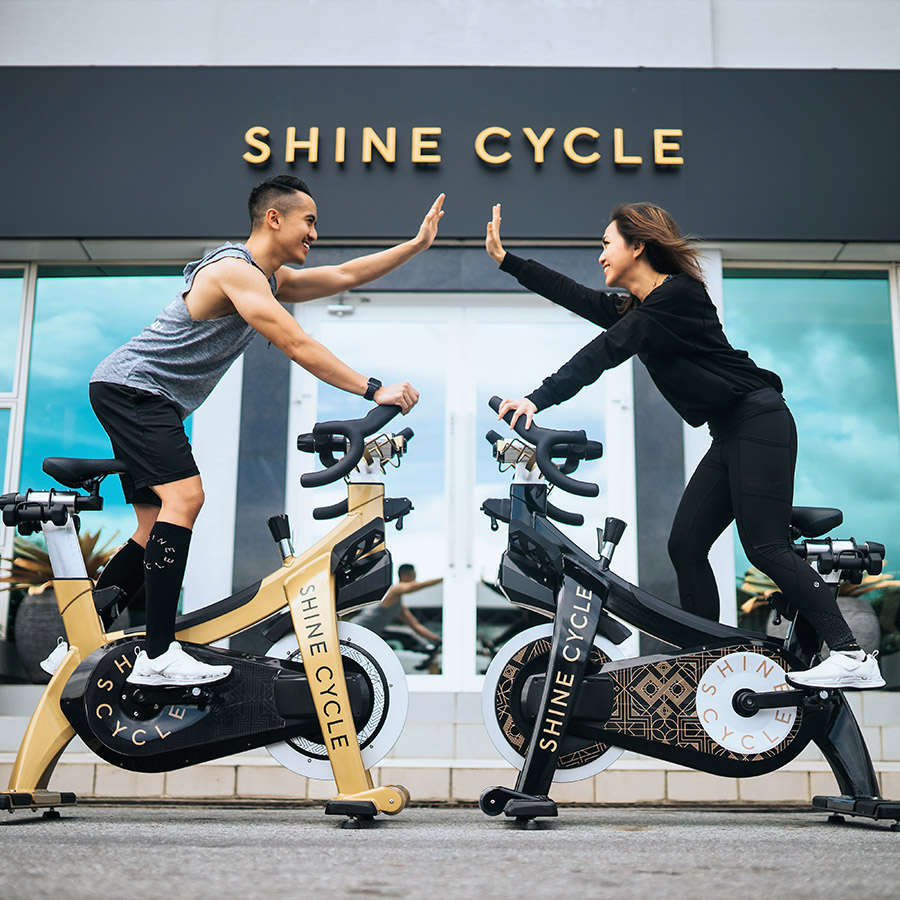You’ve mastered the art of teaching waitlisted rides, but designing a beautifully functional cycling studio may be out of your comfort zone. It’s far easier to get things wrong than right, especially if you have a small space, and even a few poorly designed inches can dramatically impact your investment.
Knowing the purpose behind every meticulous decision is essential for attracting new members and retaining talented staff. After all, the goal is to cultivate a loyal indoor cycling community that turns to you for endorphin-blasting classes — not the competition.

1 – Success Is in the Details of Your Indoor Cycling Studio
There are many reasons why cycling classes that were once full are now half-empty. Sometimes the problem is obvious — the front desk greeters are difficult, the instructors are mediocre, or the management is inconsistent. But it could be that the studio just doesn’t “feel” right. Maybe the acoustics are poor, or maybe the humidity becomes unbearable once sweaty bodies begin to move. Perhaps the bikes are spaced too closely together, or it’s simply too difficult to find a parking space.
The amount of effort and concentration required to take a class often leaves riders feeling exhausted and mentally fatigued. This could result in first-timers leaving without purchasing a class pack or finding it difficult to hang on to repeat clients.
Ignoring design details can have enormous financial implications. With so many fitness options, people don’t have to work out in a place that isn’t “just right.”
2 – Zero Contradiction
Opinions about mirrors, projection, illumination, sound, airflow, podium size, music controls, flooring, scent marketing, hand weights, chilled towels, cycling shoes, and entry doors are all based on the brand’s beliefs. And this is only the beginning!
Some owners want a floor plan with generous social spaces to accommodate community events and a warm, welcoming atmosphere. Others insist on getting riders in and out quickly before the next class and intentionally reduce the communal space in exchange for a larger ride room.
Problems arise when opinions cause contradictions, and a contradiction means someone else is wrong. Before hiring an architect or selecting a name or location, spend time exploring what you believe and why. Then, hire people who believe what you believe.

3 – Consider Traffic Patterns When Searching for a Location
While a location with high visibility and ample parking is important for a cycling studio, visit the space during high-traffic periods and observe the traffic patterns. Are cars waiting for a turn signal or pulling in and out of congested areas? Real estate agents and brokers generally do showings (through no fault of their own) during quiet periods in the day, and while a location may seem ideal at first, investigate the traffic yourself by entering and leaving the area multiple times from different directions before signing a lease.
4 – Invest Early or Pay Later When It Comes to Sound Proofing
Many lease agreements now include maximum sound and/or vibration level criteria that a new studio must meet to operate. Failure to invest in sound mitigation can quickly lead to complaints and legal action, which, if not resolved, can force a studio to close or relocate.
Every aspect of a studio’s design impacts sound transmission: how the HVAC system is routed, the kind of wall insulation, the thickness of windows, and even how the electrical outlets are sealed. It’s inseparable from the architecture and construction of the space itself.
If acoustics becomes an afterthought — waiting to see if noise proves annoying after the grand opening — by then, it’ll be too late. Unfortunately, many new owners believe they can save money by hiring an architect without expertise in cycling studio design or eliminating an acoustical engineer’s fee.

5 – Know Your Cycling Religion
Your studio’s belief is the foundation for stellar design, and attendance becomes almost a religion among devoted followers. Symbols (your brand’s logos) are worn as a mark of identity and belonging, and devotees gather at the appointed class time, showing unswerving loyalty to their guru — their chosen instructor. And just as the world’s religions have their distinct stories to tell, so do cycling studios.
The design for rhythm-based classes is different from performance-based rides, and trying to blend the needs of both, all in one space, is where many studios fail. But with keen observation skills and thoughtful planning, it’s possible to make riders of both “faiths” happy.
Know the history of indoor cycling and the differences between Spinning® and other methods, including certifications, trademarks, and the pros/cons of each bike manufacturer. https://spinning.com/about-mad-dogg-athletics/
6 – Cycling Studio Lighting
Studios are tapping into the psychology behind lighting, and profound experiences can be achieved when illumination is combined with movement, music, and motivation.
Like a musical performance, changes in brightness, color, and texture can signify pivotal moments in the class to create lasting memories. When instructors need high-energy, beat-bumpin’ atmospheres to start the party, the dazzle of kinetic lighting surrounding bodies moving together can be a euphoric experience. But when a song or its lyrics need to shine through for inward reflection, flashing colors become a distraction, and calm, subdued lighting is more effective for contemplation.

Lighting design starts with determining how lighting can enhance the messaging. For example, battery-operated candles and a dimmer switch are effective for some brands, but others require immersive pyrotechnics and glamourous nightclub vibes.
Whether hardwired, low-voltage LEDs or plug-in DJ lighting, instructors need a versatile, reliable, and easy-to-operate system to control lighting and sound
7 – Eliminate Risk
Startup studios need everything from business plans and branding to architecture, design, grassroots marketing, and rockstar instructor training. To avoid risk, owners turn to creative companies like Barbara Chancey Design Group, which specializes in uniting all those elements and bringing everything together under one roof to make your studio very profitable.

“We live and die by our work,” Chancey says. “We’ve helped over 200 cycling studio owners worldwide and understand what it takes to be relevant in 10 years – not just today.”
It’s these touches that come together to create a memorable indoor cycling studio that withstands the test of time.
